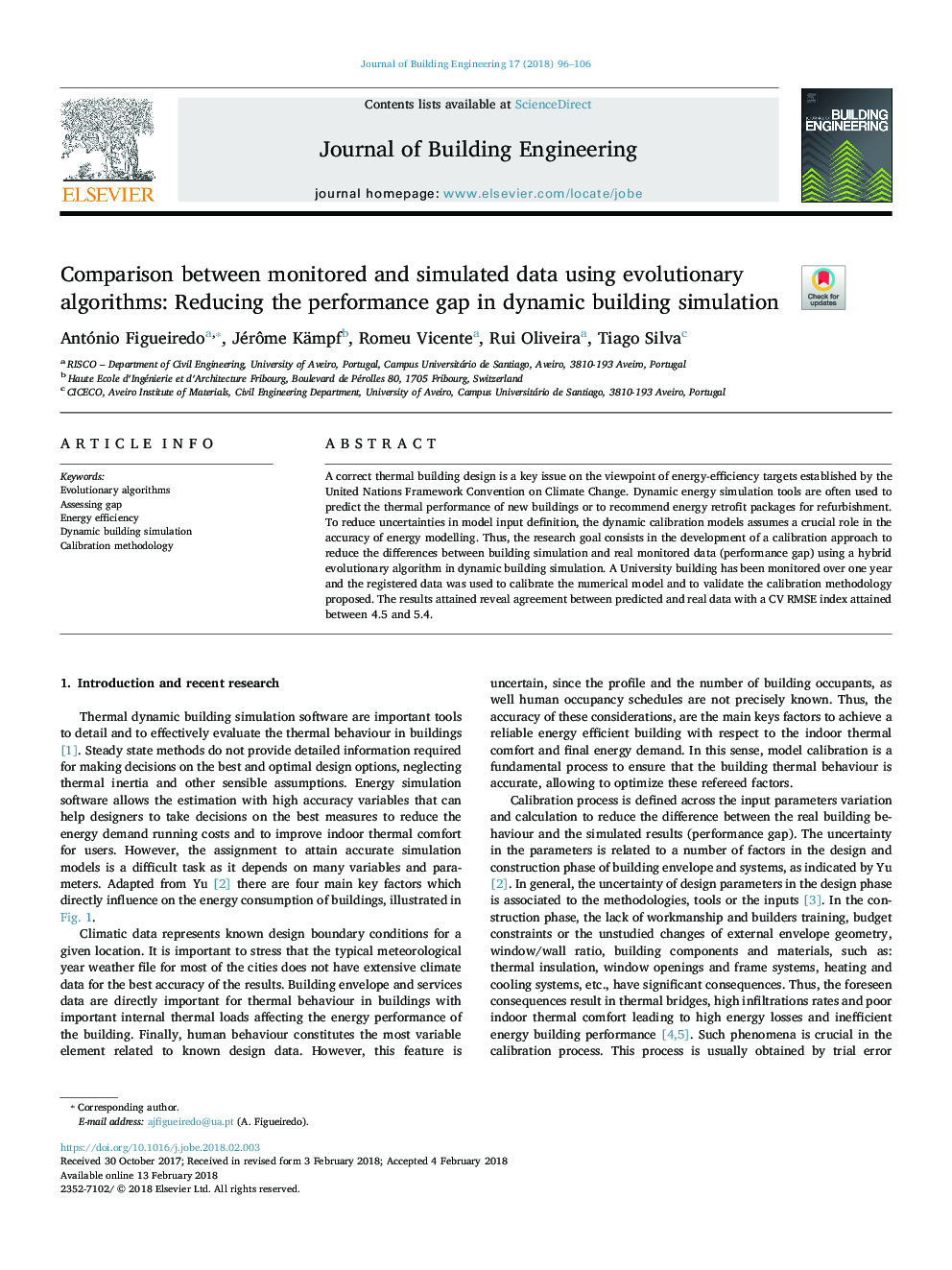| کد مقاله | کد نشریه | سال انتشار | مقاله انگلیسی | نسخه تمام متن |
|---|---|---|---|---|
| 6749923 | 1430631 | 2018 | 11 صفحه PDF | دانلود رایگان |
عنوان انگلیسی مقاله ISI
Comparison between monitored and simulated data using evolutionary algorithms: Reducing the performance gap in dynamic building simulation
ترجمه فارسی عنوان
مقایسه داده های نظارت شده و شبیه سازی شده با استفاده از الگوریتم های تکاملی: کاهش شکاف عملکرد در شبیه سازی ساختمان پویا
دانلود مقاله + سفارش ترجمه
دانلود مقاله ISI انگلیسی
رایگان برای ایرانیان
کلمات کلیدی
الگوریتمهای تکاملی، ارزیابی شکاف، بهره وری انرژی، شبیه سازی ساختمان پویا، روش کالیبراسیون،
موضوعات مرتبط
مهندسی و علوم پایه
سایر رشته های مهندسی
مهندسی عمران و سازه
چکیده انگلیسی
A correct thermal building design is a key issue on the viewpoint of energy-efficiency targets established by the United Nations Framework Convention on Climate Change. Dynamic energy simulation tools are often used to predict the thermal performance of new buildings or to recommend energy retrofit packages for refurbishment. To reduce uncertainties in model input definition, the dynamic calibration models assumes a crucial role in the accuracy of energy modelling. Thus, the research goal consists in the development of a calibration approach to reduce the differences between building simulation and real monitored data (performance gap) using a hybrid evolutionary algorithm in dynamic building simulation. A University building has been monitored over one year and the registered data was used to calibrate the numerical model and to validate the calibration methodology proposed. The results attained reveal agreement between predicted and real data with a CV RMSE index attained between 4.5 and 5.4.
ناشر
Database: Elsevier - ScienceDirect (ساینس دایرکت)
Journal: Journal of Building Engineering - Volume 17, May 2018, Pages 96-106
Journal: Journal of Building Engineering - Volume 17, May 2018, Pages 96-106
نویسندگان
António Figueiredo, Jérôme Kämpf, Romeu Vicente, Rui Oliveira, Tiago Silva,
